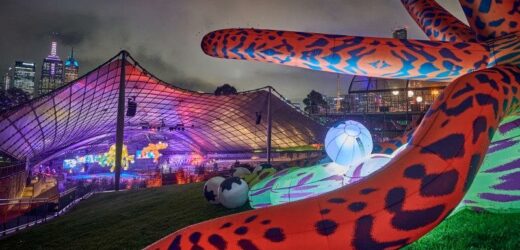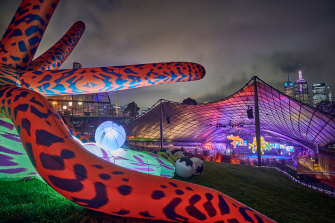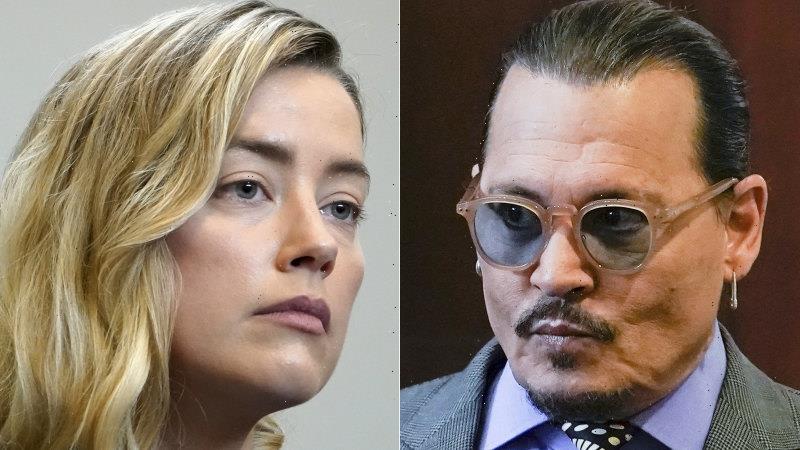Rising Festival
Opening night, Melbourne, June 1
Laser shows over the Yarra. Ice-skating under colourful projections at the Sidney Myer Music Bowl. A digital arts hub tucked away in a Chinatown car park. The Rising festival opened on Wednesday evening with a selection of events that might have drawn large crowds in an ideal world – but as winter descended with full force, early signs of the city actively embracing the festival were hard to find.
Getting the fest off the ground has been an extended ordeal. The pandemic reduced Melbourne from cultural capital to city under siege and Rising was caught out twice: postponed in 2020, it opened for one day before lockdown in 2021. Melburnians haven’t experienced either Rising or the arts festivals it replaced – the International Arts Festival and White Night – in almost three years.
Foul weather diminished the 2019 White Night, and unsurprisingly Wednesday’s bitter cold and driving rain kept midweek crowds at bay. Together with the lingering chilling effect of the pandemic it gave Rising’s opening night the air of an under-attended party.
Early Wednesday night, as Robin Fox’s Monochord streaked the Yarra River with an eerie wash of fountains and green lasers, passersby walked along blithe to the spectacle. Only a modest group of smartphone-wielding diehards lined Princes Bridge to witness it.
Winter ice-skating at the Myer Music Bowl is a cherished tradition, though I’m not sure doing it under inflatable alien sculptures and projections, with a live choir singing pop favourites from the ’80s and ’90s, really adds much to the experience. The attempt to create an outdoor hub may also have misjudged numbers, if the lonely food trucks and sparsely populated bars were anything to go by.
Inflatable monsters wait for human company at The Wilds, part of Rising festival.Credit:Eugene Hyland
A similar vibe clung to Golden Square. Transforming a Chinatown carpark into a funhouse of digital art and installation is an appealing idea, but only a few works stood out: Guan Xiao’s Weather Forecast offered a slick and entrancing video art triptych that rewired time to a pounding techno soundtrack, and a neon chapel to materialism on the roof has an authentic White Night feel.
Yet there were too many half-hearted oddities that looked like bad rave decor – without the compensating pleasures of a dance floor – and, it seemed, as many bar staff ready to pour a consoling drink as there were things to see in the digital art gallery.
Frankly, a boho winter arts party a la Hobart’s Dark Mofo is no substitute for the expired White Night. The Tasmanian capital can happily transform into Fitzroy for two weeks, but Melbourne has Fitzroy year-round. The unique experience of crowds hundreds of thousands strong streaming en masse into the city centre, as Melbourne’s major arts institutions open their doors to all comers from dusk to dawn every year, has been lost.
What about the International Arts Festival? Does Rising fare better at replacing that? Well, the dance and music programs look fuller and more impressive than the theatre.
With choreographer Gideon Obarzanek at the festival helm you’d expect dance to shine, and Marrugeku’s Jurrungu Ngan-ga (Straight Talk) was dance theatre at its finest.
A powerful exploration of oppression and identity in contemporary Australia, it challenged our treatment of refugees, First Nations and trans people, and other minorities through a sinuously designed dance-drama that took its movement cues from, among other things, the flickering ubiquity of surveillance technology.
Its performers converged on a diversity of dance styles, all fusing and struggling to free themselves from the robotic demands of social expectation (or the low-swinging chandelier of social privilege) and it represents the kind of bold new work any international arts festival would be proud to program.
I would have loved to see Danish choreographer Mette Ingvartsen’s controversial 21 Pornographies straight after, but the festival’s scheduling doesn’t quite work for those who like to binge on the performing arts.
Cherry-picking individual highlights might be the best way to experience the festival, and one exhibition you won’t want to miss is Patricia Piccinini’s A Miracle Constantly Repeated, a grotesque – and strangely sublime – sculptural wonderland hidden upstairs at Flinders St Station.
A cultural guide to going out and loving your city. Sign up to our Culture Fix newsletter here.
Most Viewed in Culture
From our partners
Source: Read Full Article



